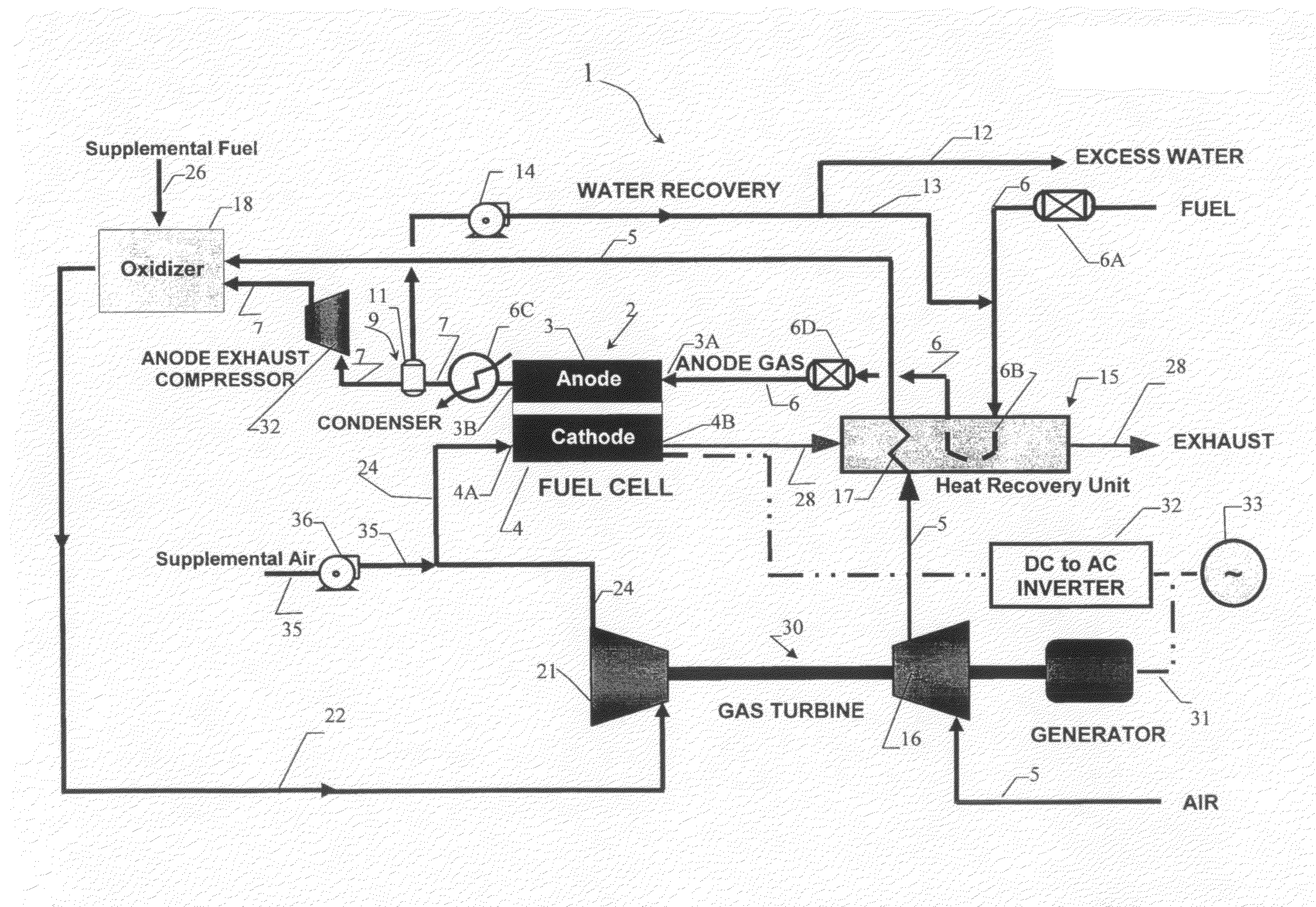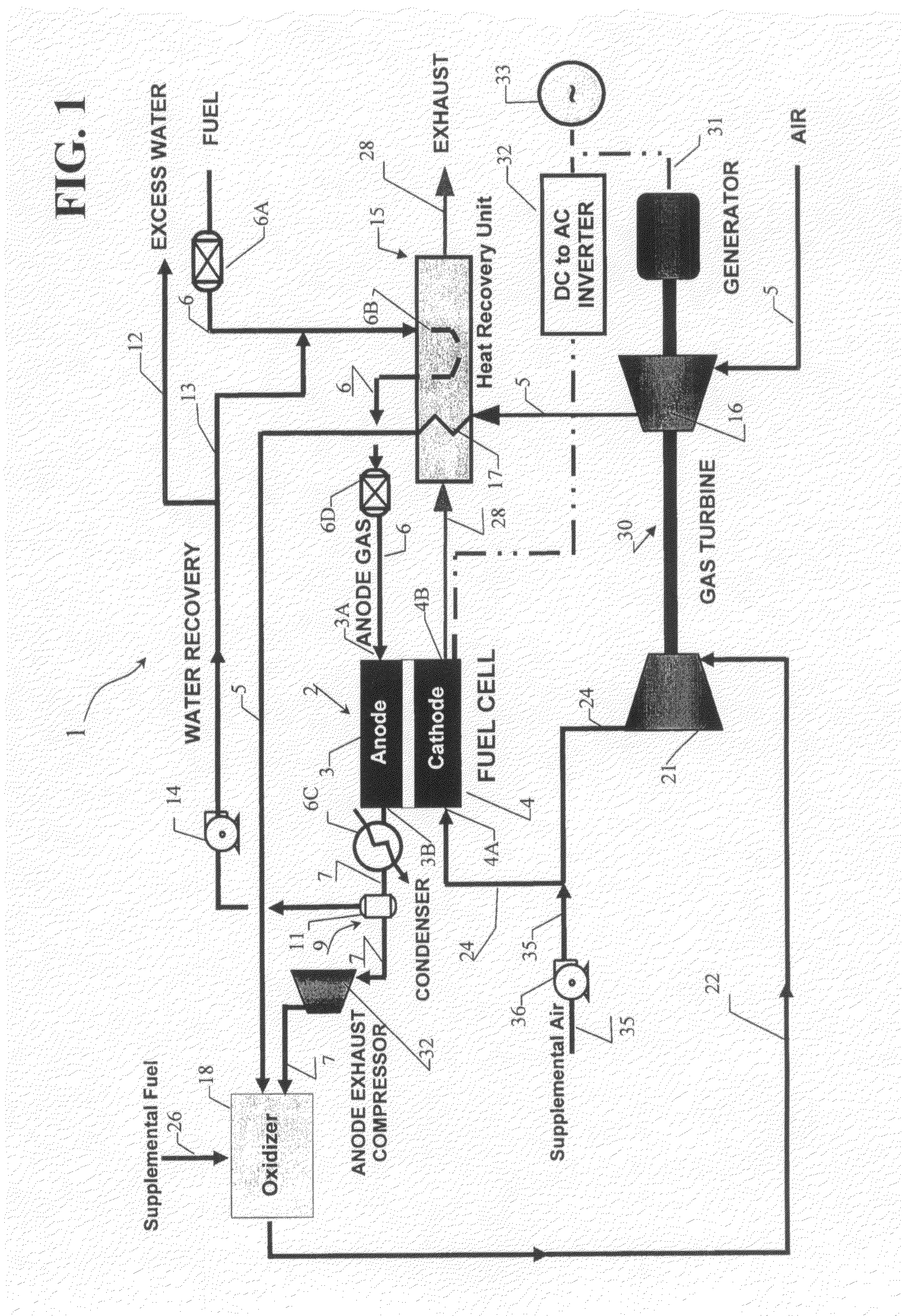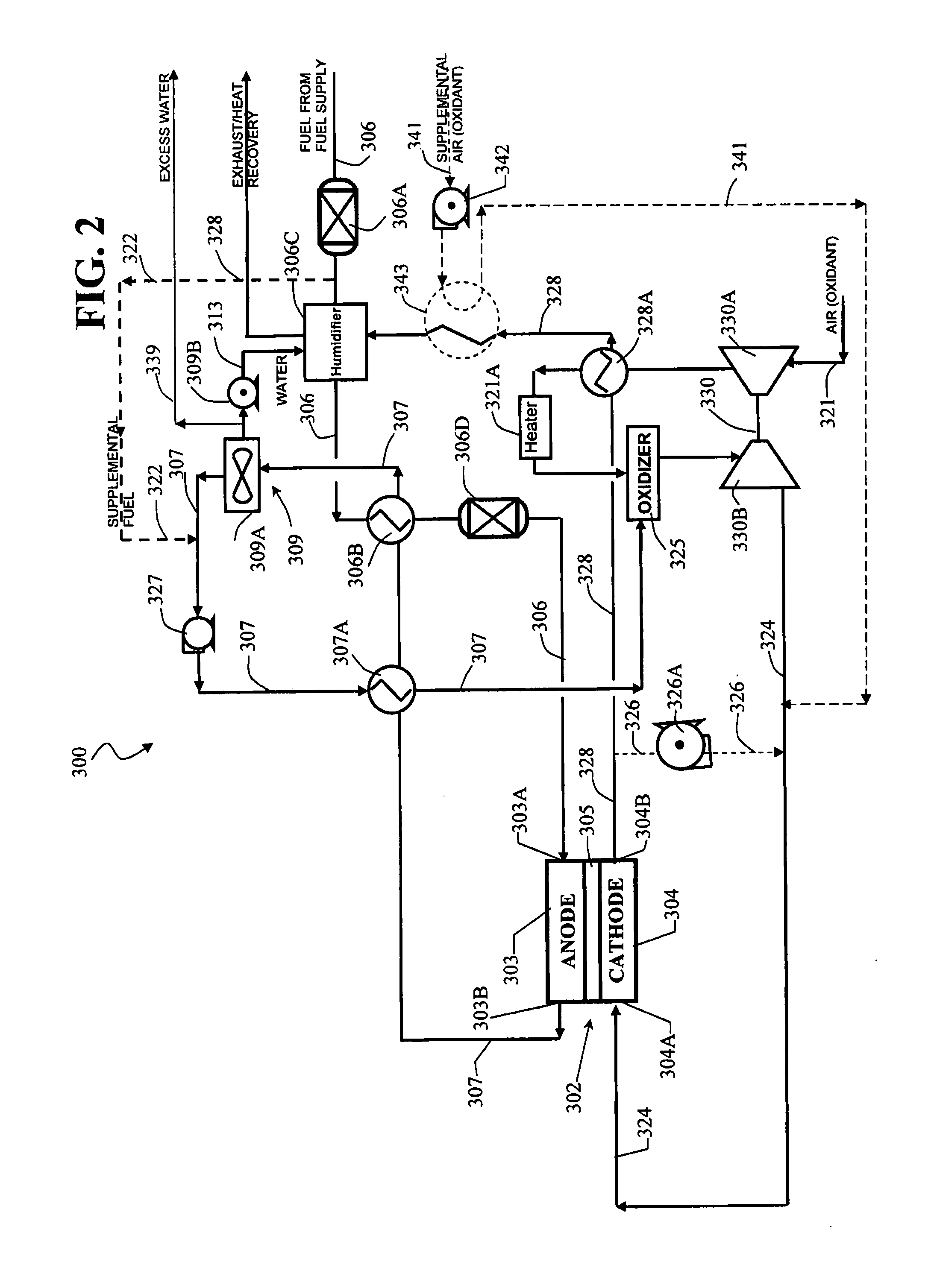Integrated fuel cell and heat engine hybrid system for high efficiency power generation
a fuel cell and heat engine technology, applied in the direction of machines/engines, electrochemical generators, fuel cells containing electrolytes, etc., can solve the problems of reducing efficiency, increasing the hardware cost of power plants, and reducing efficiency, so as to achieve high system efficiencies
- Summary
- Abstract
- Description
- Claims
- Application Information
AI Technical Summary
Benefits of technology
Problems solved by technology
Method used
Image
Examples
Embodiment Construction
[0021]FIG. 1 shows a block diagram of a hybrid fuel cell and heat engine system 1 for supplying power to a load. The system 1 comprises a high-temperature fuel cell 2 and a heat engine assembly 30. The fuel cell 2 includes an anode compartment 3 and a cathode compartment 4 separated by an electrolyte matrix. The anode compartment 3 is adapted to receive fuel from a fuel supply path 6 and to output anode exhaust. The cathode compartment 4 is adapted to receive oxidant gas and to output cathode exhaust. The hybrid system also optionally includes a water transfer assembly 9 for transferring water in the anode exhaust to the fuel supply path 6 and for outputting water-separated anode exhaust.
[0022]The fuel cell 2 can be any type of high temperature fuel cell such as a molten carbonate fuel cell or solid oxide fuel cell.
[0023]The heat engine assembly 30 can include any variety of the Internal Combustion Engine such as a combustion turbine, a 4-cycle spark ignited (SI) reciprocating engin...
PUM
| Property | Measurement | Unit |
|---|---|---|
| temperature | aaaaa | aaaaa |
| pressure | aaaaa | aaaaa |
| power | aaaaa | aaaaa |
Abstract
Description
Claims
Application Information
 Login to View More
Login to View More - R&D
- Intellectual Property
- Life Sciences
- Materials
- Tech Scout
- Unparalleled Data Quality
- Higher Quality Content
- 60% Fewer Hallucinations
Browse by: Latest US Patents, China's latest patents, Technical Efficacy Thesaurus, Application Domain, Technology Topic, Popular Technical Reports.
© 2025 PatSnap. All rights reserved.Legal|Privacy policy|Modern Slavery Act Transparency Statement|Sitemap|About US| Contact US: help@patsnap.com



